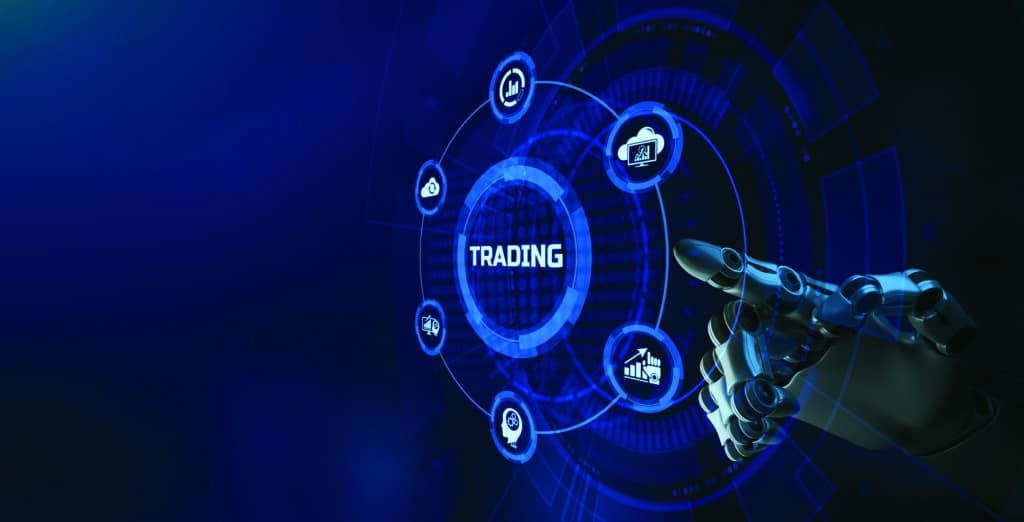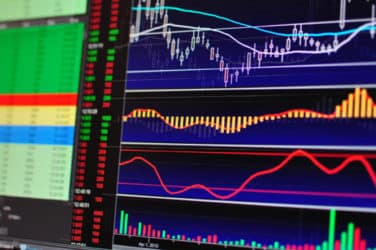
With Quentin Limouzi, Global Head of Order and Execution Management & Equity Trading Solutions, London Stock Exchange Group
More and better automation on institutional trading desks is expanding the range of transactions that can be automated, from just the easy and routine transactions to now medium-sized trades and more complex order types.
That’s according to Quentin Limouzi, who took on his current role as Global Head of Order and Execution Management & Equity Trading Solutions at London Stock Exchange Group in February 2021 following LSEG’s acquisition of Refinitiv.

Limouzi runs one of the trading and banking divisions and describes the business as comprising those pieces that make up an order and execution management system. He was previously Head of Buy-side Trading at Refinitiv and has two decades of experience in the electronic execution space.
As a result, he has seen human traders evolving their skills as trading desks have become more automated.
“Human intervention is still there, if and when the flags are not the right ones during a trading day,” Limouzi said. “So overall on the trading desk: less menial, more big-picture, more data crunching, more analytics.”
Data Critical
Traders need to crunch more data to put in place the right automation tools, the right automation triggers, and the right risk structure to ensure that automation goes smoothly. LSEG’s portfolio of solutions to help automate investment and trading workflows includes Refinitiv AlphaDesk, a cloud-based order management system (OMS) and portfolio management system (PMS) for the buy side; Refinitiv REDI EMS, a broker-neutral, multi-asset execution management system, and Refinitiv Autex Trade Route, a global order-routing network which connects more than 1,000 buy-side firms to roughly 600 brokers through a single FIX connection.
Limouzi also has responsibility for LSEG’s equities trading-related solutions including content, data, and analytics within the Refinitiv Eikon/Workspace platform.
“It’s two arms within my world, which feed off each other very well – the EMS and the OMS feed off the analytics coming from the equity arm, and vice versa,” he added.
Consultancy Coalition Greenwich said in its ‘Top Market Structure Trends to Watch in 2022’ report that process automation is high on nearly everyone’s priority list and that technology providers are focusing on providing everything “as a service.”
“Until those APIs take a standard approach, programmers and custom development are still needed almost every time,” added Greenwich. “A lot of work has been done by the industry over the past few years to create this standard. In 2022, we hope and expect broader adoption of these new interoperability mechanisms (i.e., FDC3) to increasingly take hold.”
Limouzi said the level of automation on the trading desk varies depending on where firms are in the investment process. For example, very active asset managers and hedge funds, trading more than 100 names or tickets per day, have a high level of automation. In contrast, value investors are more concerned about automating data inputs to trading from portfolio construction, risk and compliance.
“Focusing on active traders, I think the current state of automation has moved on from your typical low average daily volume stock or instruments, to a more median ADV state of automation,” said Limouzi.
Trading desks typically had an 80/20 rule to automate most orders via algorithms. Trades under a certain notional amount and a certain ADV, for example $1 million and 2% or 5% ADV, are easily automated. However, over the last few years, clients have been automating more complex trades, especially as they can use algo wheels to use the right execution method for the type of trade.
Algo wheels are an automated routing process which assigns orders to a broker’s algo based on the best fit to a preset list of conditions and have helped the buy side to implement a more systematic approach to trading. Brokers must compete for a place in the wheel based on the quality and execution performance of their algos.
Liquidity Needed
Limouzi continued that automation is being led by orders that are more liquid rather than a particular asset class or market, as they provide more digestible data.
“It’s harder to automate with less liquid or over the counter instruments, because a price or trigger point could be not noise, but very unique in nature, meaning you could not get more done at this price,” he added.
Data is required for transaction cost analysis (TCA), an essential part of automation on the trading desk. Limouzi said: “TCA is the fuel that helps traders actually trigger their automation.”
TCA provides both the pre-trade value and the at-trade performance that allows traders to accelerate, decelerate or switch strategies to achieve their required benchmark.
Refinitiv has been working on a product called TPA, Trading Performance Analytics, which provides clients with real-time access to analytics on their open orders. Clients can get pre-trade analytics such as different values around liquidity, and market impact; as well as real-time slippage information versus a number of different benchmarks that are preset.
“As a one-two punch, it’s also customizable by our clients,” added Limouzi.
Clients have the ability in Python to code their own ‘secret sauce’ to see the values that really matter to them, rather than just the values that are accepted by the entire suite.
Limouzi said: “You can put in your secret sauce that is going to help you stand out as a trading desk versus your peers.” •
The opinions expressed are those of the commentator and do not necessarily reflect the views of the firm, its clients, or LSEG, or any of its respective affiliates.
This article is for general information purposes and is not intended to be and should not be taken as a recommendation.
Automated Trading Evolves first appeared in the Q1 2022 issue of GlobalTrading, a Markets Media Group publication.






